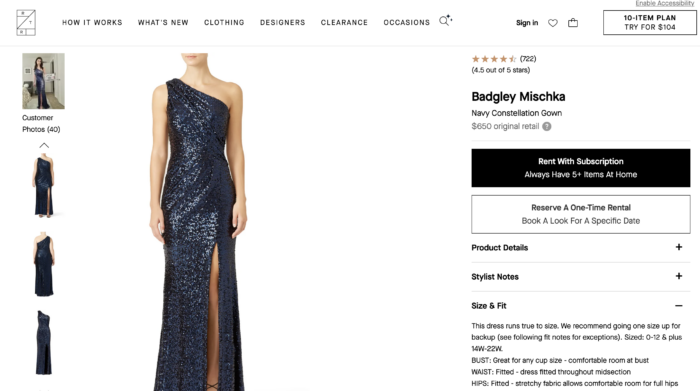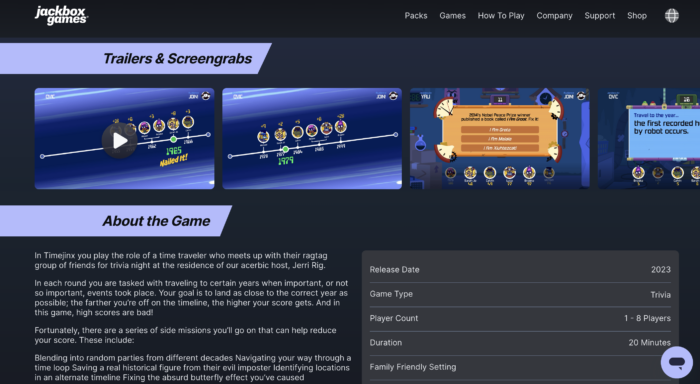A successful eCommerce business relies heavily on a well-crafted retail product page. It acts as a virtual storefront, enticing visitors to become customers by showcasing your products effectively. Each product page presents a valuable opportunity to portray your merchandise in a compelling manner, emphasizing its features, benefits, and overall value.
For brands whose products are sold through third-party online retailers, maintaining control over how their products are advertised can be challenging. Limited influence over product descriptions, images, and pricing can result in inconsistencies in brand messaging and customer experience. This lack of control has the potential to harm a brand’s image, particularly if misleading or inaccurate product information fails to meet customer expectations.
Brands must strike a delicate balance between preserving their identity and standards while adhering to the diverse requirements of multiple retail partners. Moreover, each retailer operates within its own unique digital ecosystem, further complicating the process. A misstep in this intricate balancing act can lead to inconsistent product information, a disjointed customer experience, and ultimately, lower conversion rates.
It is crucial for businesses, both brands and retailers, to prioritize the optimization of product pages, ensuring they effectively communicate the value and appeal of their offerings while maintaining consistency across various retail platforms. By doing so, eCommerce players can enhance their online presence, build a stronger reputation, and increase their chances of converting visitors into loyal customers.
The Potential Impacts of Well-Optimized Product Pages
Well-optimized product pages can have a profound impact on both sales and customer satisfaction. When product pages are designed with the customer in mind and loaded with engaging and informative content, they can serve as persuasive sales tools. They can effectively convey the unique selling proposition and the intrinsic value of your products, enticing visitors to make a purchase.
Moreover, a well-optimized product page can also significantly enhance customer satisfaction. When customers have all the information they need at their fingertips with just a few clicks, including detailed product descriptions, high-resolution images, and customer reviews reduces uncertainty and builds trust. This not only boosts immediate sales but also fosters customer loyalty and promotes repeat business.
Thus, well-optimized product pages create a win-win scenario, driving sales growth and enhancing customer satisfaction.

The Anatomy of a High-Converting Retail Product Page
A high-converting retail product page is a strategic mix of key elements designed to attract, convince, and convert visitors into customers. Each element plays a crucial role in shaping the consumer’s decision-making process.
High-Quality Product Images & Videos
High-quality product images and videos can significantly increase conversion rates on a retail product page. Visuals play a crucial role in online shopping as they are the customer’s primary interaction with the product. Clear, detailed images and videos allow customers to examine the product closely, much like they would in a physical store. This creates a sense of familiarity and trust, encouraging customers to make a purchase.
Plus, high-quality visuals can demonstrate the value and functionality of a product. Users can see the product in use, understand its size, texture, and color, and perceive its quality. This reduces uncertainties and questions about the product, leading to fewer abandoned carts.
On top of this, images and videos can boost an eCommerce product page’s SEO, making the product easier to find through search engines. By incorporating alt text and appropriate file names, retailers can improve their product visibility and attract more potential customers. Hence, the inclusion of high-quality images and videos is a strategic move towards creating a higher converting retail product page.
Trust Badges & Statements
In the realm of online shopping, trust is a crucial factor that affects a customer’s willingness to complete a transaction. Trust badges, such as security seals, privacy certificates, or endorsements from reputable organizations, help in reassuring customers about the safety and credibility of the online store or platform. They signify that the retailer has implemented appropriate security measures to protect against data breaches and fraud, thereby fostering a sense of security in the customer.
On the other hand, trust statements are equally important. Clear and direct statements about product authenticity, return policies, customer support, or money-back guarantees can alleviate customer anxieties about product quality or post-purchase issues. They instill confidence in the customer about the retailer’s commitment to customer satisfaction, making them more likely to commit to a purchase.
Leverage Customer Psychology
Leveraging psychology is a powerful strategy that can significantly enhance the conversion rate of a retail product page. One psychological principle that can be employed is the scarcity principle. This principle suggests that items in limited supply are perceived to be more valuable. By indicating that a product is “limited in stock” or “selling fast,” retailers can create a sense of urgency among prospective customers, prompting quicker purchase decisions.
Another psychological tactic is the use of social proof, which involves showing potential customers that others have purchased and enjoyed the product. This can be displayed through customer reviews, ratings, or testimonials. Seeing that others have had a positive experience with the product can alleviate fears and uncertainties, nudging potential customers toward making a purchase. Therefore, incorporating psychological tactics into a retail product page can effectively motivate purchases and increase conversions.

Include Customer Reviews (The Good & The Bad)
Customer reviews serve as powerful testimonials that can significantly boost the conversion rate of a retail product page. They provide real, unbiased opinions about the product and its performance, helping potential customers to make informed purchasing decisions when shopping online only. Customers often trust reviews as much as personal recommendations, making them a crucial element of a high-converting product page.
Positive reviews can reinforce the value of the product, while constructive criticism or negative reviews can highlight areas for improvement, contributing to the overall transparency and credibility of the retailer. Furthermore, responding to reviews, both positive and negative, demonstrates the brand or retailer’s commitment to customer satisfaction.
Declutter Product Pages
Presenting a clean and uncluttered product page is a strategic move to achieve higher conversion rates. Customers typically prefer browsing a page that is not overloaded with information, distracting elements or unnecessary clutter. A clean design offers visitors a clear path to viewing the product and its details, which optimizes the user experience. This could significantly influence a visitor’s decision to make a purchase.
Moreover, decluttering pages can also improve loading times, critical for maintaining user engagement. A well-structured product page, emphasizing essential elements like product images, descriptions, pricing, and call-to-action (CTA) buttons, can foster a user-friendly atmosphere. This enhancement can facilitate easier navigation, encouraging visitors to stay longer on the page and boosting the chances of conversion.
Utilize a FAQ Section
Incorporating a frequently asked questions (FAQ) page is an effective strategy to increase conversion rates. By preemptively addressing common customer queries, this feature can expedite the decision-making process for potential buyers. The FAQ section serves a dual purpose—providing quick information to the customer and reducing the load on the customer service team.
Additionally, an FAQ section can contribute to enhancing a website’s SEO. By integrating relevant keywords into the answers given, you can improve the page’s visibility on search engines, attracting more organic traffic. Consistent updates to the FAQ section, based on customer feedback and trends, can keep content fresh and relevant. This ongoing optimization could lead to higher engagement rates and, consequently, higher conversion rates.

Emphasize Value Proposition
Your product’s value proposition must clearly communicate to visitors what your product offers and why it stands out in the marketplace. When customers understand the unique value your product offers, they are more likely to convert.
Firstly, ensure that your value proposition is prominent and easy to understand. It should be one of the first things a visitor sees when they land on your product page. Use clear, concise language and communicate the benefits that your product can bring to the customer.
Secondly, substantiate your claims with customer testimonials, online reviews, or case studies, as these can serve as social proof and increase trust in your product. By making a compelling case for your product’s value, more visitors can be persuaded to make a purchase, thereby improving conversion rates.
Prioritize Mobile Conversions
More and more consumers are using their smartphones and tablets for online shopping, so a mobile-optimized product page or eCommerce site can significantly improve the user experience for this substantial market segment.
Firstly, adapt the website design to be responsive, meaning it adjusts to fit any screen size or device. This includes elements such as images, text, and buttons, which should all be easy to view and interact with on a mobile device.
Secondly, prioritize page speed on mobile platforms, as slow load times can lead to a high bounce rate. Implement a simple checkout process on mobile devices, reducing the steps needed to complete a purchase. Offering multiple payment options can also enhance the mobile shopping experience.
Lastly, use mobile-specific features like click-to-call or location services to provide additional convenience for mobile users. By making these adjustments, you can capture more mobile conversions and increase overall conversion rates.
Write Compelling & Accurate Product Descriptions
A well-crafted product description effectively communicates the features of your product, while also highlighting the value it can bring to the customer. As such, it doesn’t merely list facts about the product, but it tells a story that emotionally resonates with your target audience.
Firstly, understand your customer’s needs and wants. Use this information to explain how your product can solve a problem they have or enhance their life in some way. Incorporate sensory words to help customers visualize using your product and use a tone that aligns with your brand and appeals to your target audience.
Secondly, include social proof in your descriptions, such as customer testimonials or ratings, to build trust and credibility. Remember to highlight unique features of your product, and explain these in simple, jargon-free language. By crafting engaging, persuasive, and informative product descriptions, you can drive more conversions on retail product pages.
When product pages are designed with the customer in mind and loaded with engaging and informative content, they can serve as persuasive sales tools.
Have a Clear & Compelling Call to Action
A CTA serves as a directive to the potential customers, guiding them toward the next step in the buying process. It can be as simple as “Add to Cart,” “Buy Now,” or “Subscribe for More.” However, to truly captivate the audience, the CTA should be creatively designed and strategically placed. It should blend seamlessly with the overall design of the page but stand out enough to grab attention.
Additionally, personalizing the CTA according to the customer’s journey can help in achieving a higher conversion rate. For instance, a first-time visitor could see a “Learn More” CTA, while a returning visitor might see a “Welcome Back, Get 10% Off on Your Next Purchase”. Using action-oriented, persuasive language in the CTA can also create a sense of urgency, encouraging customers to act immediately. Therefore, a clear and compelling CTA is an indispensable tool for creating a higher converting retail product page.
Examples of Successful Retail Product Pages
A well-optimized product page can make a significant difference in conversion rates. The following are examples of successful retail product pages that have expertly leveraged various elements like detailed product descriptions, high-quality images, and user-friendly design to enhance customer experience. Learn from these examples to create compelling product pages that capture attention and drive sales.
Rent the Runway
Rent the Runway, a popular online service that provides designer dress and accessory rentals, has mastered the art of creating compelling product pages that convert. Their product pages are meticulously designed to provide comprehensive, high-quality visual content that enables customers to make informed decisions. They feature high-resolution images of the product from various angles and on models of different sizes, providing a realistic view of the product. Moreover, they employ color accuracy technology to ensure that the product’s color is depicted as accurately as possible in product photos, eliminating potential dissatisfaction due to color discrepancies.

In addition to the compelling visual content, Rent the Runway incorporates engaging and detailed product descriptions that offer information about the fit, size, fabric, and designer. Furthermore, they use customer reviews and ratings as a form of social proof, providing potential buyers with real-life experiences and feedback about the product. This transparency builds trust and credibility, encouraging customers to make a purchase. Thus, by combining detailed visual presentation with rich product descriptions and customer testimonials, Rent the Runway creates highly effective product pages that drive conversions.
Jackbox Games
Jackbox Games showcases exemplary product pages that convert effectively, owing greatly to their distinct combination of engaging visual design, concise and persuasive copy, and a straightforward call-to-action.
Each game’s page is a medley of vibrant screenshots, entertaining trailers, and user-generated content that give potential customers a sneak peek into the fun, interactive experience offered by the game. This visual feast not only demonstrates the game’s features in action but also creates a sense of anticipation and excitement, compelling the visitor to engage with the product.

However, the driving force behind Jackbox Games’ high conversion rate is more than just its attractive visual presentation. The product pages are designed with a deep understanding of their target customers’ needs and expectations. The copy is written with clarity and brevity, focusing on the benefits and unique selling propositions of each game, while the pricing and purchasing options are transparent and easy to navigate. There’s an emphasis on social proof, with testimonials and user reviews prominently displayed, instilling trust and credibility. These elements collectively create a user-friendly, persuasive, and trustworthy environment that encourages purchase decisions.
How Wiser Can Help Inform Brand-Retailer Conversations
Wiser’s Digital Shelf Intelligence product is a powerful tool that can help facilitate data-driven discussions between brands and retailers regarding their product pages. By utilizing advanced machine learning algorithms, it systematically gathers and analyzes a wealth of information, ranging from product availability and pricing to customer reviews and ratings.
This comprehensive coverage provides brands with valuable insights into every aspect of their product’s online presence, enabling them to optimize their strategies and address any potential issues.
By leveraging the data provided by Wiser’s solution, brands can have more informed, evidence-based conversations with retailers. They can discuss their product’s performance, competitiveness, and areas of improvement, making these discussions not just subjective but based on real-world data.
This enables brands and retailers to collaborate more effectively, and work toward a common goal of maximizing product page performance. In addition, the use of accurate data from Wiser’s Digital Shelf Intelligence product can serve to establish trust and foster stronger relationships between brands and retailers.
The Impact of High Converting Product Pages
High converting product pages can greatly influence the success of a business in today’s highly competitive eCommerce marketplace. These pages, when designed effectively, can drive consumer engagement, raise brand awareness, boost customer loyalty, and ultimately increase sales. They serve as a vital touchpoint in the customer journey and can mean the difference between a casual browser and a loyal customer.
With retail technology constantly advancing, it’s crucial for businesses to embrace the latest best practices for product page optimization. By focusing on the key elements listed above, businesses can enhance the user experience, build trust with their audience, and boost conversion rates. The impact of high-converting retail product pages cannot be underestimated as they are essential in shaping the success of any eCommerce business. Therefore, investing time and resources into optimizing and fine-tuning these eCommerce product pages is crucial for achieving sustainable growth in the competitive online retail landscape.














